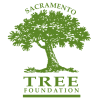Updated 2023: Are your tree’s leaves gooey, sticky, and messy?
September 4, 2012
During warm weather, sap-sucking aphid populations increase dramatically. They can reproduce within about a week, creating many generations of sucking insects that deserve the title pest. Some types of trees are more susceptible than others, such as hackberries, red oaks, and crape myrtles.
Although aphids won’t cause much damage when the populations are small, heavy infestations can deform leaves and sap resources from the tree. When aphids cause the edges of leaves to curl, they will hide inside, making it harder to treat the issue. In addition, the sticky substance they produce is messy.
Trees seldom die from aphids alone, but because they can make such an unattractive mess and stress your trees, here are some tips for control:
You are not alone
Tiny wasps, lady beetles, tiny flies, and lace wings are just a few beneficial insects that prey on aphids. These happy feeders do most of the work in keeping aphid count low. Attract them naturally to your garden with pollinator plants and plants they need to raise their young.
Dances with ants
Ants are important members in the web of life, but they will protect aphids from beneficial insects and even farm them because they eat honeydew, the sugary substance aphids secrete. Control the ant population to allow beneficial insect populations to grow.
Avoid fertilizer
Fresh green growth is very attractive to aphids. Avoid using fertilizers, especially nitrogen-heavy fertilizers, in the areas underneath your trees unless a specific nutrient deficiency has been identified.
Get active
On smaller trees, use a strong spray of water to knock aphids to the ground. Spray early in the day, every day, for at least three days. Most aphids do not have wings and will not be able to get back up into the tree.
Stronger options
When infestations are heavy, natural solutions may not be effective. It’s too late in the season to treat an aphid infestation because these trees will soon lose their leaves, but plan to treat them in late winter to prevent them the following year.
There are some natural pesticides available for use, but hire a certified arborist to discuss whether they are feasible for your tree or if they suggest stronger solutions to knock back the pests.
